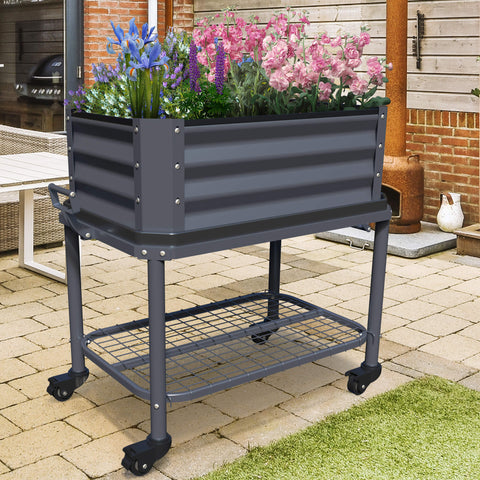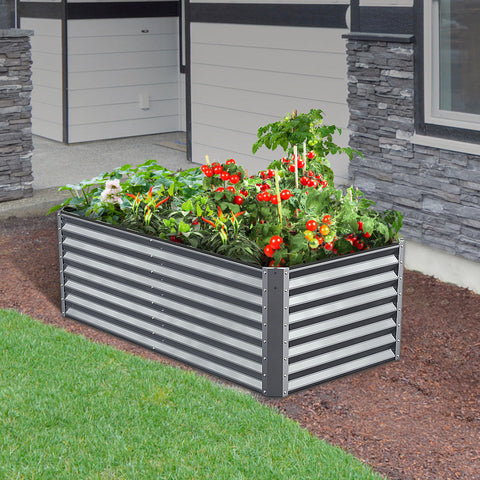Sweet potatoes are a nutritious choice that can keep the cellar full in winter! Gardeners growing large harvests will need to keep a few things in mind when harvesting sweet potatoes to prolong the life of their delicious bounty.The following content also has some reference value for raised garden beds.
Although the growing season is filled with high humidity weather, they prefer a cool, moisture free storage environment to last throughout the winter. Storage can only be carried out after a process called pickling, during which the starch in sweet potatoes turns into sugar and the tubers form a second layer of skin, making them more resistant to damage.
In order to further increase your chances of successful harvest, search for known varieties with long storage life or varieties that are most suitable for your garden conditions and growth area. Obtaining a healthy tuber is one of the best indicators of your storage success!
When the tubers of sweet potatoes begin to emerge from the ground and the vines begin to turn yellow, sweet potatoes can be harvested. If you know what variety you are planting, you can better guess the harvest date by querying their expected growth time.
The conditions for harvesting sweet potatoes and curing crops are very important. To start maintenance correctly, please wait for a warm day (above 55 degrees Fahrenheit) and avoid rain, as exposure to water can slow down the drying of this root plant. Be sure to harvest the sweet potatoes before the first frost date, as frost can seriously damage them. Harvest all the plants at once, and if the vines are free from disease, compost them. Be sure to start in the morning, preferably when there is no rain for a few days,
How to Harvest Sweet Potatoes
For backyard and home growers, there are two main ways to harvest sweet potatoes. The first method is to simply use hands and small hand tools to dig out tree roots from the ground. In fact, reaching into the ground and searching for these wonderful tubers in the soil is very satisfying. Another method is to use a tool called a garden fork. Insert the fork outside the root growth area and lift the soil. Continue digging until you gradually approach the roots of the plant.
Healing Your Gains
Sweet potatoes need to be pickled immediately after harvesting. During this process, starch becomes sugar, making the potatoes sweeter and the roots lose moisture. After harvesting, the taste will develop over time, which means you do need some patience. That's why sweet potatoes are very suitable for storage.
Storage of sweet potatoes
There are several ways to cure these delicious roots. Based on your situation, choose the most suitable method for you. Each choice uses different methods to prevent water from entering the tuber, maintain low temperature (preferably 60 degrees Fahrenheit), and keep the roots dry throughout the storage process. If done correctly, your crop may last for several months or even a year.
Sand method
The sand method is a method of preventing sunlight and other elements that may harm the roots of sweet potatoes. However, as this method does not allow for good ventilation, it is not recommended to use other methods.
Place the sweet potato in a bucket or bucket (make sure it is not clean and does not allow light to enter), and spread sand on top of the sweet potato. Ensure that the potatoes do not come into contact with each other.
Flat noodles or box
To store in Flat noodles or boxes (perhaps the easiest way to reach them), find well ventilated Flat noodles and boxes and layer the sweet potatoes. Try to have only one layer of sweet potatoes per box and stack them in a ventilated manner as much as possible.
Place the pickled tubers in a cool, well ventilated closet or room, or in a large storage or pantry. If you are worried about them being exposed to sunlight, you can try wrapping individual sweet potatoes with newspapers to block out the light, but allow air to flow. Ideally, the storage temperature would be close to 55-60 degrees Fahrenheit.
Extremely cold
A modern and more labor-intensive method for storing sweet potatoes is freezing. This is the ideal choice for backyard gardeners, as they have a small crop or a large refrigerator.
Tubers cannot be frozen immediately. After the pickling process is completed, peel the sweet potatoes, cut them well, and cook until the forks become soft. Frozen cut or mashed sweet potatoes immediately after cooking. This is very suitable for frying sweet potatoes or distributing baby food separately.









